Inside the birth of a $1 million Kickstarter campaign
Kickstarter.com, as you may know, lets inventors present their ideas to the public, in hopes of raising enough money to move forward with production. The genius of it is that the creators make their pitches directly to consumers; the middlemen and the gatekeepers of the manufacturing industry are cut out completely.
Sometimes truly great new products result. Sometimes they flop. But either way, there’s something exhilarating when the potential audience comes along for the ride of creation.
Most people probably think of Kickstarter as a place where tech projects get their start, like Oculus Rift and the Pebble smartwatch (remember that?). But creative projects also thrive there; people often seek funding to make an album, a play, or even a movie or TV show.
I’ve reported on Kickstarter dozens of times, but I’ve never before been part of a Kickstarter campaign—until now.
I’m joining NOVA, the most popular science TV show in America, to host a new, two-hour NOVA special called “Beyond the Elements,” which we hope will air on PBS next year. And we’re hoping to raise the $1 million we need with a Kickstarter campaign.
Why? Because, according to the Association of Public Television Stations, the government supplies only about 27% of public TV’s budget; the rest has to be raised through grants, gifts, and fundraising, which is hard and getting harder. Why not ask the public to help out directly?
Our campaign went live on Tuesday, Jan. 31, and it’s been a fascinating ride. So today, I’m offering you a look of what it’s like to create a Kickstarter campaign—from the inside.
April 4, 2012
“Hunting the Elements” airs on PBS. It’s a two-hour NOVA special that dives into the marvels of the periodic table of the elements. I’m the host. (You can watch it free online.)
Two hours about the elements? It could have been dry as dust. But Chris Schmidt (NOVA executive producer, “Elements” mastermind, and my buddy) had a vision: Use the power of television to show what elements are really all about, as memorably as possible. Pour molten gold on camera. Visit an FBI training facility in New Mexico to detonate a car bomb. Drop raw sodium into water and watch the resulting fireball shoot 25 feet into the sky.
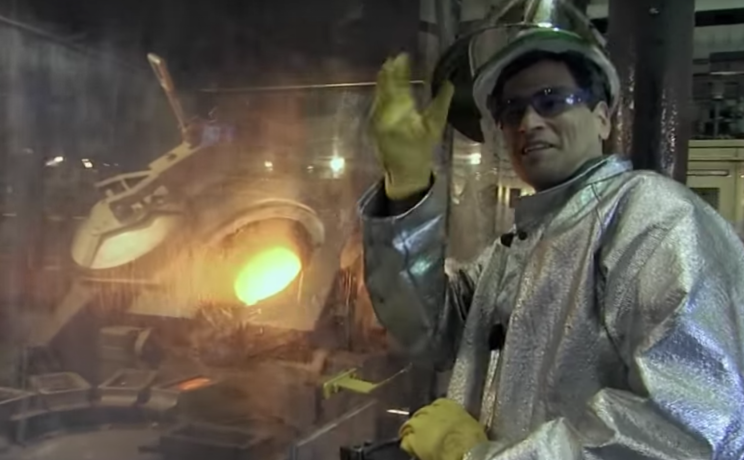
It’s an amazingly entertaining, informative show.
April 10, 2013
My son comes home from high school to report that his science teacher showed “Hunting the Elements” in class. Suddenly, I’ve got cred among my own kids.
It’s no surprise (the science teacher part, not the cred part); the show has been watched by millions of people, and has become a staple of science classes. I get stopped in airports by gawking teenagers who recognize me. Now that’s novel.
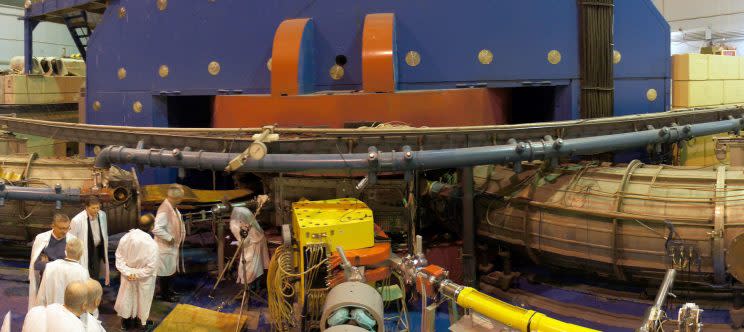
April 27, 2014
Since 2010, I’ve hosted about 15 NOVA shows. To everyone’s amazement, these episodes have become catnip to children. Something about the combination of authoritative science and my own juvenile sense of humor—I don’t know.
Today, I’m a speaker at the 2014 U.S. Engineering and Science Festival in Washington, D.C. It’s teeming with kids who love science—and their parents. The realization that these shows are doing something, that they’re reaching the next generation…it’s the greatest rush, the greatest sense of purpose, I’ve ever known.
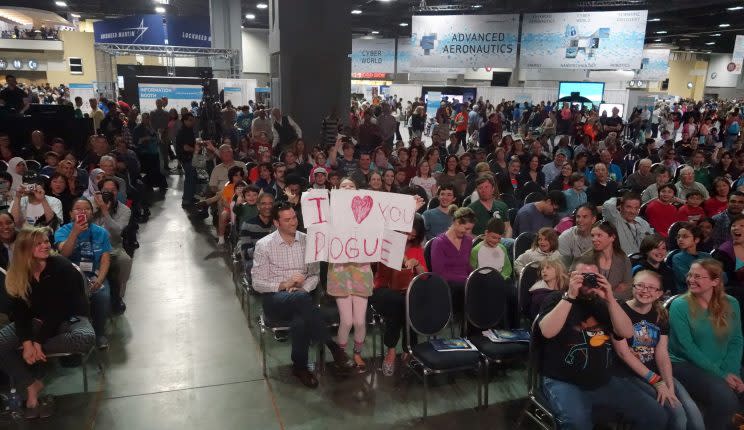
After the talk, I spend some time signing autographs and talking to these kids. I meet, for example, Henry from Massachusetts. He says that he has watched “Hunting the Elements” 120 times—sometimes twice a day. He says he’s practically got it memorized. So I pull out my phone and quiz him.
A dad asks me when we’re going to make more NOVA shows. I tell him that these are high-end, professional films that cost a lot to produce, and it’s sometimes a challenge to get funding.
And then he puts the bug in my head.
“Look around you, David,” he said. “Look at these people. There are thousands of us who love those science shows. You should put together a Kickstarter campaign. Let us fund the show! I bet you’d do it!”
I have to admit, it’s a decent idea. Look at “Reading Rainbow”—another educational show, originally on PBS, with a huge fan base. Host Levar Burton sought to bring it back. His Kickstarter campaign sought $1 million in funding—and raised $5.4 million.
I email Chris Schmidt and Paula Apsell, who’s his boss; she runs NOVA at WGBH, the Boston PBS station that produces shows like “Frontline,” “Antiques Roadshow,” “Masterpiece,” and, of course, NOVA.
Her reply: “Yes. Kickstarter is a great idea; I will work on it with Pam Rosenstein tomorrow.” (Pam is our funding guru.)
Wow—could this thing really happen?
May 2015
Chris has a killer idea for the Kickstarter experiment: A sequel to “Hunting the Elements.”
The first special had been inspired by this amazing coffee-table book called “The Elements,” by mad scientist Theo Gray (who we also featured in the show).
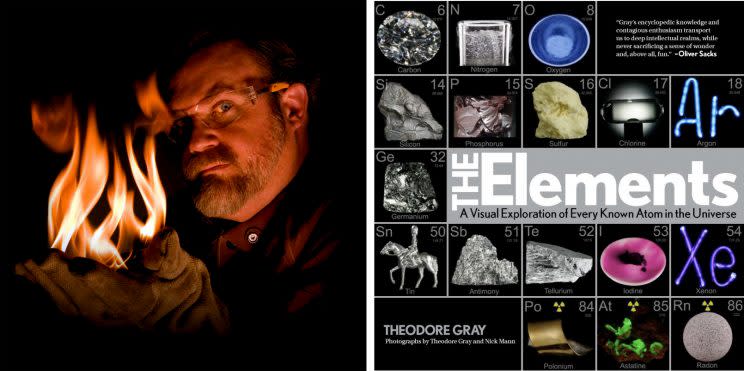
And now Theo has a new book out called “Molecules.” It’s just a fascinating book. And Chris thinks it would make a fascinating science movie.
Chris writes up a description:
The Periodic Table tells us that there are 118 elements; 94 have been found to be naturally occurring. But the universe would be a pretty dull place if elements only existed in their pure form and never managed to join forces with others. We wouldn’t be here; neither would water, air, rock, or just about anything else familiar.
So this story is about the building blocks of matter that really matter: Molecules. According to the American Chemical Society, we’ve discovered or invented nearly 100 million unique chemical substances—and they estimate that by the end of the century, that number could approach a billion. That’s because nature and man have learned how to stick the elements together like Tinker Toys or Legos; two at a time, three at a time, even billions at a time.
To explore the incredible story of how molecules shape everything, from the galaxies to water droplets, we’re sending technology journalist and NOVA host David Pogue across the country—from the Austin Hot Sauce Festival to the fertilizer plants in Oklahoma—on a quest to discover the role of molecules in the universe, our world, our civilization and us.
I’m sold. Not only would this make a great show, but it’s also perfect for the Kickstarter project. It’s suitable for all ages; it covers a very broad, very important area of science; and it could be another classroom staple for years to come.
We even have a great name for the new show: “Beyond the Elements.”
October 16, 2015
Chris and Paula have been talking to all the interested parties, including their colleagues at WGBH and, of course, the big bosses at PBS. Everyone’s fascinated by the idea—going to the public to seek funding for a public television project seems like a natural evolution, but everyone wants to be cautious. The relationships between PBS, its member stations, WGBH, NOVA, donors, foundations, and the Corporation for Public Broadcasting (the government-funded nonprofit that distributes money to public TV and radio stations) is complex and finely tuned, and we don’t want to break anything.
None of us has ever done this before; we need an experienced hand—someone who’s run a Kickstarter campaign before. So Chris brings aboard Ivan Askwith, whose team guided the successful crowdfunding campaigns for “Veronica Mars” (2013, most backers in Kickstarter history); “Reading Rainbow” (2014, broke the “Veronica Mars” record); “Super Troopers 2” (2015, most funded film ever on Indigogo), “Mystery Science Theater 3000” (2015, most funded film ever on Kickstarter), and “Who the F*** is Frank Zappa” (2016, most funded Kickstarter documentary ever).
Ivan seems to be fairly qualified to run our project.
December 1, 2016
I take the train to Boston to shoot the all-important Kickstarter video, the one that appears front and center on the project’s Kickstarter page. Everyone’s donating their time—the cameraman, WGBH staff, me, everyone. It’s beginning to feel like a movement!
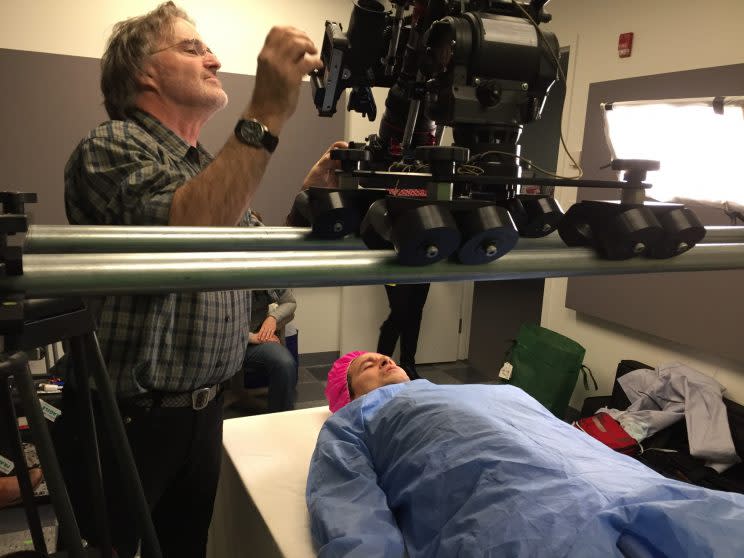
It occurs to us, by the way, that it really is a movement. The idea for this show, after all, came not from a TV executive, but by a member of the public. We’re living, frankly, in a time when many people are intimidated by science, or even hostile to it (insert your own political wisecrack here).
But it’s our fervent belief that science, once explained well, doesn’t need to be threatening and scary. In fact, it can be thrilling—even entertaining, as we’ve discovered through our previous NOVA collaborations.
More to the point, we need science right now, more than ever. If we’re going to solve any of the Big Problems, like climate change, hunger, disease, and epidemics, science is all we’ve got.
Heck, even if you care only about the little problems—short phone battery life, dropped calls, stuttering Netflix videos—science is still the only tool we have.
We need more great minds embracing science—and young minds—than ever.
January 10, 2017
There are a lot of pieces to a Kickstarter campaign. How should we describe the project? Should there be humor? What if we make more than our $1 million goal—what should the “stretch goals” be?
And what should the rewards be? When you contribute to a Kickstarter campaign, you’re not investing, exactly. Instead, what you get out of it is primarily the fun of becoming part of the team—you’re kept in the loop as the project progresses—but you also get little rewards, little thank-yous.
In the case of the “Beyond the Elements” campaign, the rewards range from T-shirts, to signed copies of Theo’s “Molecules” book, all the way up to lunch with me (although I’m not sure if that’s a reward or a punishment).
Everyone who contributes will be part of the team. I’ll send you photos and behind-the-scenes video clips from my phone throughout the year-long filming process. For the first time in NOVA history, this will be a two-way conversation; we’ll seek input and questions from our backers as we go.
We’ve worked out the some stretch goals; the top one, $2.25 million, will let us send DVD or Blu-ray copies of both shows (“Hunting the Elements” and “Beyond the Elements”) to every public high school in America.
(Me: “Can’t they just stream it?”
WGBH’s education director: “Believe it or not, a huge number of schools don’t have the technology to stream internet video in the classroom.”)
As we worked on answering all of the details, it became clear that this campaign was about more than making a TV show. We—all of us—feel as though there’s a bigger picture here. Science, and helping the public understand and appreciate it, is unbelievably important. With this project, we have a shot at creating something big enough to reach millions of people, and permanent enough to become a teaching tool for years to come.
January 31, 2017
At 11:30 this morning, our Kickstarter campaign went live. We have 30 days to raise the money we need to make “Beyond the Elements”—and bring it to as wide an audience as possible. It’s a crazy, way-out plan, something that’s never been done before in the history of public television—but it just…might…work.
Here goes…something!
David Pogue, tech columnist for Yahoo Finance, welcomes non-toxic comments in the Comments below. On the Web, he’s davidpogue.com. On Twitter, he’s @pogue. On email, he’s poguester@yahoo.com. You can read all his articles here, or you can sign up to get his columns by email.


